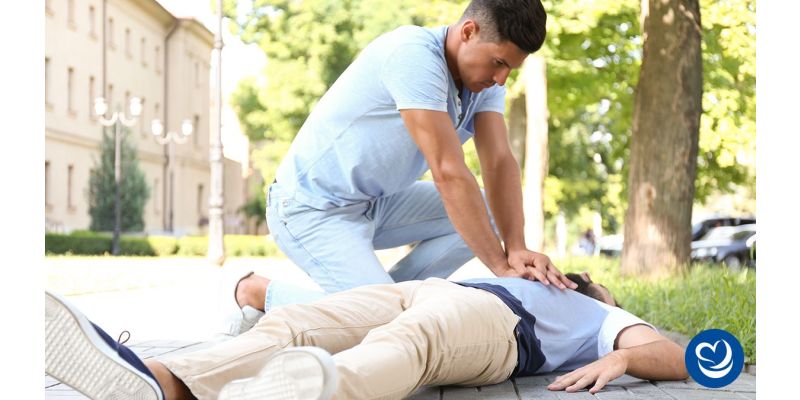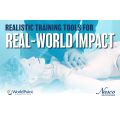Fact or Fiction: Debunking CPR Myths
At WorldPoint, we're passionate about saving lives through effective CPR training. In our pursuit of this mission, we've encountered numerous myths and misconceptions surrounding CPR. In this article, we'll dive into the world of CPR myths, debunking common misconceptions, and shedding light on the importance of accurate CPR knowledge. So, let's get started on our journey to separate fact from fiction and empower you with the truth about CPR.
The Importance of Accurate CPR Knowledge
Before we delve into debunking CPR myths, let's set the stage by emphasizing the critical nature of accurate CPR knowledge. CPR, or Cardiopulmonary Resuscitation, is a life-saving technique that can mean the difference between life and death in emergency situations. It's not just for medical professionals; it's a skill that anyone can and should learn. Sadly, many people harbor misconceptions about CPR, which can lead to hesitation or even inaction in crucial moments.
Now, let's address some of the most persistent CPR myths and provide clarity on each one.
Myth 1: Only Medical Professionals Can Perform CPR
Myth: CPR is a complex medical procedure that only trained healthcare providers can perform effectively.
Fact: While medical professionals receive extensive CPR training, anyone can learn and perform basic CPR. In fact, immediate CPR from a bystander can double or even triple a person's chance of survival in a cardiac arrest situation. CPR training is readily available to the public, and it empowers everyday heroes to step in and save lives when needed.
Myth 2: CPR Always Revives a Person
Myth: CPR guarantees the revival of a person in cardiac arrest.
Fact: CPR is not a magical resurrection technique. Its primary purpose is to maintain blood circulation and oxygen flow to vital organs until professional medical help arrives. Successful revival depends on various factors, including the cause of cardiac arrest, response time, and the quality of CPR performed. While CPR can be incredibly effective, it doesn't guarantee a revival in all cases.
Myth 3: You Can Break Someone's Rib While Giving CPR
Myth: Performing CPR can result in broken ribs, making it dangerous.
Fact: It's true that CPR can sometimes lead to rib fractures, especially in older individuals or those with fragile bones. However, the risk of not performing CPR when it's needed far outweighs the risk of rib fractures. Remember, saving a life should be the top priority, and broken ribs can heal over time.
Myth 4: Mouth-to-Mouth Resuscitation is Always Required
Myth: Mouth-to-mouth resuscitation is a mandatory part of CPR.
Fact: CPR guidelines have evolved, and for adult victims, hands-only CPR is now recommended in most cases for bystander CPR, or CPR given by the general public. Hands-only CPR involves chest compressions without mouth-to-mouth breathing. It's simpler, more accessible, and has been proven to be just as effective as traditional CPR in many situations.
Myth 5: CPR is Only for Heart Attack Victims
Myth: CPR is only necessary for heart attack victims.
Fact: While CPR is crucial for individuals experiencing cardiac arrest due to a heart attack, it is not required – and not recommended – to perform CPR on a victim experiencing a heart attack that is not experiencing sudden cardiac arrest. A heart attack is not the same as sudden cardiac arrest, and it is important to learn the differing signs & symptoms of heart attack and sudden cardiac arrest. CPR is also used for victims suffering from cardiac arrest from other life-threatening causes, such as drowning or choking. Knowing when and how to perform CPR in various emergencies can save lives.
Myth 6: You Can Be Legally Sued for Performing CPR Incorrectly
Myth: Performing CPR incorrectly can result in legal repercussions.
Fact: In the United States and many other countries, Good Samaritan laws protect individuals who provide assistance in good faith during emergencies, including performing CPR. These laws are designed to encourage bystanders to help without fear of legal consequences, as long as they act reasonably and in accordance with their training or knowledge.
Myth 7: Children and Adults Receive the Same CPR Technique
Myth: The CPR technique for children is the same as that for adults.
Fact: CPR techniques differ for children and adults. Children have different physiology and require specific approaches. Proper training ensures that you can adapt your CPR skills based on the age and size of the victim. When performing chest compressions on a child (ages 1 through puberty), it is recommended to either only one hand or both hands, depending on the size of the child. When performing CPR on an infant (under 1 year of age), it is recommended to only use two fingers to provide compressions. Similarly, in small children, it is not recommended to exceed 2 inches of depth in compressions. However, CPR for both children and adults require the same compression rate of 100-120 compressions per minute.
Myth 8: It's Better to Do Nothing Than to Perform CPR Incorrectly
Myth: It's safer to do nothing and wait for professional help than risk performing CPR incorrectly.
Fact: Time is of the essence in cardiac arrest situations. Doing something, even if it's not perfect, is better than doing nothing. CPR performed imperfectly is still better than no CPR at all. Training and practice can boost your confidence and effectiveness in providing CPR.
The Reality: The Lifesaving Power of Correct CPR Knowledge
Dispelling these CPR myths is not just about correcting misinformation; it's about saving lives. Accurate CPR knowledge empowers individuals to take action in emergency situations and dramatically improves the chances of survival for those in need.
At WorldPoint, we're committed to promoting the proper education and training of CPR and resuscitation skills. We offer a range of high-quality training products and equipment designed to support CPR trainers and empower individuals with life-saving skills. By learning CPR and staying updated on best practices, you can make a real difference in your community.
Spreading the Truth About CPR
It's essential to spread the truth about CPR and dispel the myths that can hinder life-saving efforts. CPR is a valuable skill that everyone should learn, and it's not as complicated or intimidating as some myths suggest. By debunking these misconceptions, we hope to inspire more people to take CPR training seriously and become confident, capable responders in times of crisis.
Remember, the power to save a life is in your hands, and accurate CPR knowledge is your greatest tool. Join us in our mission to make the world a safer place by learning and sharing the truth about CPR. Together, we can save lives, one compression at a time.
Have any questions? Need a quote?

WorldPoint has 25+ years of experience as a strategic partner to CPR and healthcare trainers, providing them with high-quality products, resources, and knowledge to better train both healthcare professionals and their communities to live long and healthy lives. At WorldPoint, our mission is to:
- Provide high-quality healthcare and CPR products that train people around the world to save lives
- Support healthcare professionals, first responders & the community
- Dedicate ourselves to raising awareness around sudden cardiac arrest
- Align ourselves with the best organizations, like Illinois Heart Rescue, and Citizen CPR Foundation and more
We are passionate about making a difference through high-quality CPR and healthcare training in lay-responder, pre-hospital, & in-hospital settings. We want to help you represent your community, champion health equity, and save more lives.
Chat with us on our website, www.worldpoint.com, send us an email at [email protected], or give us a call at 888-322-8350. We look forward to answering all your questions!
We are WorldPoint. And we are at the heart of your training.







